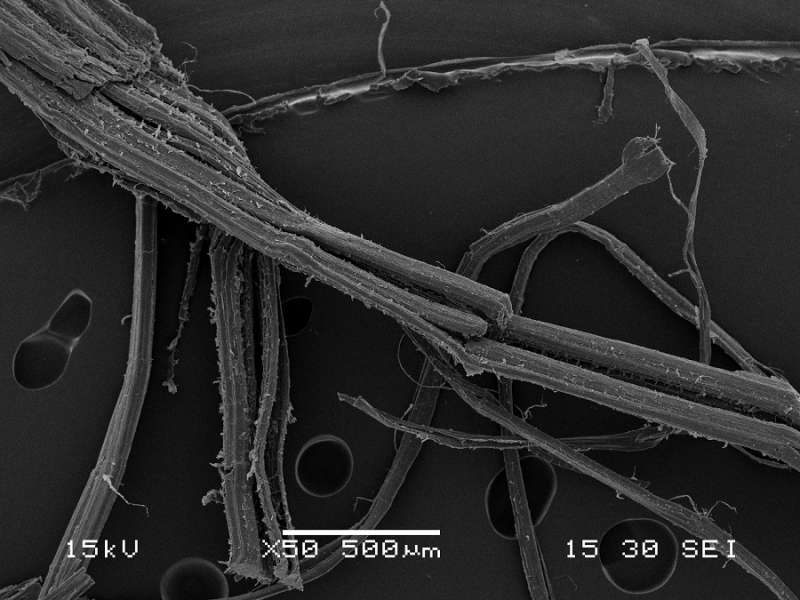A raincoat for houses

The construction industry is preparing to use textiles from the clothing and footwear industries. Gore-Tex-like membranes, which are usually found in weather-proof jackets and trekking shoes, are now being studied to build breathable, water-resistant walls. Tyvek is one such synthetic textile being used as a "raincoat" for homes.
Camping tents have also inspired this modern construction "buildtech sector." This new field of research focuses on animal-based fibres such as wool or silk, plant-based fibres such as linen and cotton, and synthetics such as polyester and rayon in order to develop technical or high-performance materials, thus improving the quality of construction, especially for buildings, dams, bridges, tunnels and roads. This is due to the fibres' mechanical properties, such as lightness, strength, and also resistance to such factors as creep, deterioration by chemicals, and pollutants in the air or rain.
"Textiles play an important role in the modernisation of infrastructure and in sustainable buildings," explains Andrea Bassi, professor at the Department of Civil and Environmental Engineering (DICA), Politecnico of Milan.
"Nylon and fiberglass are mixed with traditional fibres to control thermal and acoustic insulation in walls, façades and roofs. Technological innovation in materials, which includes nanotechnologies combined with traditional textiles used in clothes, enables buildings and other constructions to be designed using textiles containing steel polyvinyl chloride (PVC) or ethylene tetrafluoroethylene (ETFE). This gives the materials new antibacterial, antifungal and antimycotic properties in addition to being antistatic, sound-absorbing and water-resistant."
Rooflys is another example. In this case, coated black woven textiles are placed under the roof to protect roof insulation from mould. These building textiles have also been tested for fire resistance, nail sealability, water and vapour impermeability, wind and UV resistance.
In Spain, three researchers from the Technical University of Madrid (UPM) have developed a new panel made with textile waste. They claim that it can significantly enhance both the thermal and acoustic conditions of buildings, while reducing greenhouse gas emissions and the energy impact associated with the development of construction materials.
Besides textiles, innovative natural fibre composite materials are a parallel field of the research on insulators that can preserve indoor air quality. These bio-based materials, such as straw and hemp, "can reduce the incidence of mould growth because they breathe. The breathability of materials refers to their ability to absorb and desorb moisture naturally," says expert Finlay White from Modcell, who contributed to the construction of what they claim are the world's first commercially available straw houses. "For example, highly insulated buildings with poor ventilation can build up high levels of moisture in the air. If the moisture meets a cool surface, it will condensate and producing mould unless it is managed. Bio-based materials have the means to absorb moisture so that the risk of condensation is reduced, preventing the potential for mould growth."
The Bristol-based green technology firm is collaborating with the European Isobio project, which is testing bio-based insulators that perform 20 percent better than conventional materials. "This would lead to a 5 percent total energy reduction over the lifecycle of a building," explains Martin Ansell, from BRE Centre for Innovative Construction Materials (BRE CICM), University of Bath, U.K., another partner of the project.
"Costs would also be reduced. We are evaluating the thermal and hygroscopic properties of a range of plant-derived by-products including hemp, jute, rape and straw fibres plus corn cob residues. Advanced sol-gel coatings are being deposited on these fibres to optimise these properties in order to produce highly insulating and breathable construction materials," Ansell concludes.
Provided by Youris.com



















